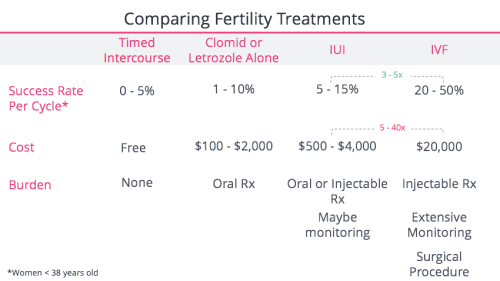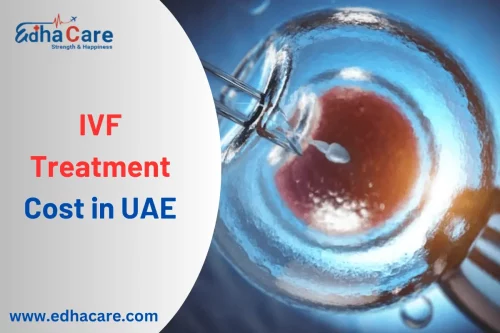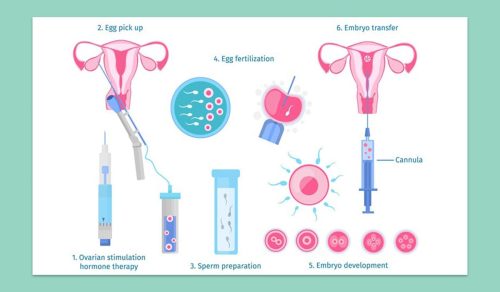How Much Does an IVF Procedure Cost? Your Guide to Understanding the Price Tag
In vitro fertilization (IVF) is a life-changing option for many hoping to start a family, but the cost can feel like a big question mark hanging over the process. If you’re wondering how much an IVF procedure really costs, you’re not alone—it’s one of the first things people want to know when they start exploring fertility treatments. The truth is, the price varies widely depending on where you live, what your specific needs are, and even the little extras that can add up fast. Let’s break it all down so you can get a clear picture of what to expect, plus some insider tips to make it more manageable.
Why IVF Costs What It Does
IVF isn’t just one simple step—it’s a whole journey packed with medical expertise, technology, and personalized care. The price reflects a mix of factors that come together to give you the best shot at success. Think of it like building a custom house: you’ve got the foundation (doctor visits and tests), the framework (medications and lab work), and the finishing touches (embryo transfer and follow-ups). Each piece has its own cost, and they stack up differently for everyone.
The average cost of a single IVF cycle in the United States hovers between $12,000 and $25,000, according to recent estimates from the White House and fertility experts. But that’s just the starting point. Some clinics quote a base price closer to $10,000, while others climb past $30,000 when you factor in extras like genetic testing or donor eggs. So, what’s driving these numbers? It’s all about the process: stimulating your ovaries, retrieving eggs, fertilizing them in a lab, and transferring an embryo back into the womb. Every step requires skilled hands, high-tech equipment, and sometimes a bit of trial and error.
Breaking Down the IVF Price Tag
To really get a handle on what you might pay, it helps to see where the money goes. Here’s a rundown of the main costs you’ll encounter during an IVF cycle, based on the latest data and real-world experiences.
Initial Consultations and Testing
Before you even start IVF, you’ll need to figure out why natural conception isn’t happening. This means appointments with a fertility specialist, blood tests, ultrasounds, and maybe a semen analysis for your partner. These steps can cost anywhere from $500 to $2,000, depending on your clinic and insurance coverage. It’s like the prep work before a big project—necessary, but it adds up.
Medications: The Hidden Heavy Hitter
Fertility drugs are a huge chunk of the bill, often ranging from $3,000 to $7,000 per cycle. These meds kick your ovaries into gear to produce multiple eggs, and the price depends on how much you need and how your body responds. Some folks need higher doses or longer treatment, which can push costs closer to $10,000. Fun fact: these drugs are often injected daily for weeks, so you’re not just paying for the medicine but also the commitment it takes to stick with it.
The Core Procedure: Egg Retrieval and Embryo Transfer
The heart of IVF—egg retrieval, lab fertilization, and embryo transfer—usually costs between $7,000 and $15,000. This covers the surgery to collect your eggs (under anesthesia, no less), the lab magic where eggs meet sperm, and the delicate process of placing an embryo in your uterus. Clinics bundle these into a “base fee,” but watch out: some don’t include anesthesia ($500-$1,000 extra) or lab fees, so ask for the full breakdown.
Extra Add-Ons That Boost the Bill
Lots of couples tack on optional services to improve their odds, and these can really change the final number:
- ICSI (Intracytoplasmic Sperm Injection): If sperm quality is an issue, a single sperm gets injected into each egg. Add $1,000-$2,500.
- Genetic Testing (PGT): Screening embryos for chromosomal issues costs $3,000-$6,000, plus lab fees.
- Frozen Embryo Transfer (FET): If you freeze extra embryos for later, each transfer runs $3,000-$5,000.
- Donor Eggs or Sperm: Using donated materials can add $10,000-$20,000 or more, depending on the source.
These extras are like upgrading your phone plan—nice to have, but they bump up the price fast.
A Quick Cost Snapshot
Here’s a simple table to give you a visual:
| IVF Component | Typical Cost Range |
|---|---|
| Initial Testing | $500 – $2,000 |
| Medications | $3,000 – $7,000 |
| Egg Retrieval & Transfer | $7,000 – $15,000 |
| ICSI | $1,000 – $2,500 |
| Genetic Testing (PGT) | $3,000 – $6,000 |
| Frozen Embryo Transfer | $3,000 – $5,000 |
| Donor Eggs | $10,000 – $20,000+ |
This is just a ballpark—your total could be lower or higher based on your situation.
How Location Changes the Game
Where you live plays a massive role in what you’ll pay. IVF in New York City or Los Angeles might hit $20,000-$30,000 per cycle, while a clinic in a smaller town could charge $10,000-$15,000. Why the gap? Big cities have higher overhead—think rent, staff salaries, and fancy equipment. Plus, demand is higher, so clinics can charge a premium.
Internationally, it’s a different story. Countries like Mexico, India, or Spain offer IVF for $3,000-$8,000 per cycle, drawing “fertility tourists” looking to save cash. The catch? You’ve got travel costs, language barriers, and different medical standards to consider. Still, for some, it’s worth the trip—especially if they’re facing multiple cycles.
Insurance: Friend or Foe?
Here’s where things get tricky: most U.S. insurance plans don’t fully cover IVF. Only 19 states have laws mandating some fertility coverage, and even then, it’s often limited. If you’re lucky, your plan might cover testing or meds, shaving off $2,000-$5,000. But the full procedure? That’s usually out-of-pocket unless you live in a state like Massachusetts or New Jersey, where coverage is broader.
In 2025, there’s buzz about expanding access, with the Trump administration’s IVF Executive Order hinting at federal support. Posts on X show folks debating whether this will lower costs or just shift them onto insurance premiums. For now, call your provider and ask exactly what’s covered—don’t assume anything.
The Real Cost: Multiple Cycles
IVF isn’t a one-and-done deal for most people. Success rates hover around 40% per cycle for women under 35, dropping as you age. That means many couples need 2-3 cycles, pushing the total cost to $30,000-$75,000 or more. A 2023 Stanford study found that affordability heavily influences how many try again—lower-income families often stop after one round, while higher earners keep going.
Quick Quiz: How Many Cycles Might You Need?
Take a sec to think about your situation:
- Are you under 35 with no major health issues? ✔️ One cycle might do it (40-50% success).
- Over 40 or dealing with low egg quality? ❌ Plan for 2-3 cycles (10-20% success per try).
- Using donor eggs? ✔️ Higher odds (50-60%), so maybe just one.
This isn’t exact science, but it helps set expectations—and your budget.
Hidden Costs You Might Miss
Beyond the obvious, there are sneaky expenses that catch people off guard:
- Time Off Work: Egg retrieval and transfer need a day or two each, plus recovery. Lost wages can add $500-$1,000 per cycle.
- Travel: If your clinic’s far, gas, parking, or flights pile up—maybe $200-$1,000.
- Emotional Support: Therapy or support groups ($50-$150 per session) help with the stress, and IVF can be a rollercoaster.
- Storage Fees: Freezing embryos or eggs costs $500-$1,000 a year.
These aren’t in the clinic’s quote, but they hit your wallet just the same.
Cutting Costs Without Cutting Corners
Paying for IVF feels daunting, but there are ways to ease the sting. Here’s how real people make it work:
Shop Around (Smartly)
Clinics vary wildly in price, even in the same area. Call 3-5 places and ask for a detailed quote—base fee, meds, add-ons, everything. Some offer package deals for multiple cycles (e.g., $25,000 for 3 tries), which can save you thousands if you need more than one shot.
Look for Financing
- Clinic Plans: Many offer payment plans or loans with 0% interest for 12-24 months.
- Fertility Loans: Companies like Prosper or Future Family lend $10,000-$50,000 tailored for IVF.
- Grants: Nonprofits like Baby Quest give $2,000-$15,000 to qualifying couples—check eligibility online.
Go Mini or Natural
“Mini IVF” uses fewer drugs, dropping costs to $5,000-$7,000 per cycle. Success rates are lower (10-20%), but it’s gentler on your body and wallet. Natural cycle IVF skips meds entirely, costing $3,000-$5,000, though it’s best for younger women with good egg reserves.
Tax Breaks and HSAs
In the U.S., IVF qualifies as a medical expense. If your total health costs exceed 7.5% of your income, you can deduct the rest on your taxes—potentially saving $1,000-$3,000. Got a Health Savings Account? Use it tax-free for meds, procedures, even travel.
The Latest Trends: What’s New in 2025
IVF costs aren’t static—new tech and policies keep things shifting. Here’s what’s hot right now:
- Simplified Systems: A 2024 study from PMC highlighted a low-cost IVF method slashing lab expenses by 90%. It’s not widespread yet, but it could drop prices to $1,000-$3,000 in the future.
- AI Boost: Clinics are testing AI to pick the best embryos, cutting down on failed cycles. It’s pricey now ($500-$1,000 extra), but long-term savings could be huge.
- Policy Push: X chatter shows growing support for subsidized IVF, with some predicting government or employer coverage by 2030. California’s 2024 mandate is a test case—premiums might rise, but access could too.
Beyond the Price: What You’re Really Paying For
Dollars aside, IVF’s cost includes time, energy, and hope. A single cycle takes 4-6 weeks, with daily shots, frequent visits, and a lot of waiting. Success isn’t guaranteed, but the payoff—a baby—can feel priceless. A 2023 HFEA report pegged U.K. pregnancy rates at 41% per embryo for women 18-34, dropping to 6% for 43-50. Knowing this helps you weigh the investment.
Case Study: Sarah’s Story
Sarah, a 38-year-old teacher from Ohio, spent $45,000 over three cycles. Her insurance covered testing ($1,500), but she paid $12,000 per round plus $6,000 in meds. Cycle one failed, cycle two ended in miscarriage, but cycle three brought her son. “It was brutal,” she says, “but holding him made every penny worth it.” Her tip? “Save where you can—generic meds cut my drug bill by $1,000.”
Your IVF Budget Blueprint
Ready to plan? Here’s a step-by-step guide to figure out your costs:
- Get a Diagnosis: Spend $500-$2,000 upfront to know what you’re dealing with.
- Pick a Clinic: Compare quotes—aim for $10,000-$20,000 per cycle, all-in.
- Estimate Meds: Budget $3,000-$7,000, more if you’re over 35.
- Plan for Extras: Add $5,000-$10,000 if you want ICSI or PGT.
- Buffer for Multiples: Double or triple it if you expect 2-3 tries.
- Check Support: Look into insurance, grants, or loans to offset.
Total guess? $15,000-$50,000, depending on your path.
Poll: What’s Your Biggest IVF Worry?
Let’s hear from you—vote below to see what others think too:
- A) The upfront cost
- B) Needing multiple cycles
- C) Hidden fees
- D) Emotional toll
Results show up next week—your input shapes our next deep dive!
Three Things You Haven’t Heard About IVF Costs
Most articles stick to the basics, but here are some fresh angles:
- The Pharmacy Hack: Generic fertility drugs are popping up, cutting med costs by 20-30%. A 2024 survey of 50 clinics found patients saved $800-$2,000 per cycle this way—ask your doc if it’s an option.
- Refund Programs: Some clinics now offer “money-back guarantees”—pay $20,000-$30,000 upfront, get 70-100% back if no baby after 3 cycles. It’s a gamble, but it caps your risk.
- Employer Perks: Big companies like Google and Starbucks cover IVF (up to $25,000) for employees. Smaller firms are joining in—check your benefits or negotiate it into your next job offer.
Making Peace With the Price
IVF’s cost can feel like a mountain, but it’s also a bridge to something huge. Whether you’re scraping by or dipping into savings, the key is knowing what you’re in for and finding ways to stretch your dollars. Talk to others who’ve been there—online forums and local support groups are goldmines for real talk and hacks. And don’t be shy about asking clinics for discounts; some knock off 10-15% for cash upfront.
At the end of the day, it’s not just about the money—it’s about what you’re building. A family, a future, a little person who might just change everything. So, take a deep breath, crunch those numbers, and step into this with eyes wide open. You’ve got this.




